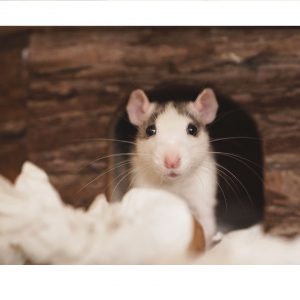Hamsters are small and curious creatures that make great pets. Two of the most popular types of hamsters are Syrian and Dwarf hamsters.
And while they may look similar at first glance, there are significant differences in their physical appearance and temperament that you should consider before choosing one as a pet.
So let’s go over what exactly each is and the biggest differences between a Syrian and a Dwarf hamster!
What are Syrian and Dwarf Hamsters?
Syrian Hamsters

Syrian hamsters, also known as golden hamsters, are the largest of the hamster breeds.
On average, they can grow up to 6-7 inches in length. They have short, stocky bodies and come in various colors, including golden, cream, and brown.
Syrian hamsters are generally friendly and enjoy interaction with their owners. They also have a longer lifespan than dwarf hamsters, living on average for 2-3 years.
Dwarf Hamsters

Dwarf hamsters are smaller than Syrian hamsters, with an average size of 2-4 inches in length.
There are several breeds of dwarf hamsters, including Campbell’s, Winter White, and Chinese dwarf hamsters.
They can have a variety of coat colors, such as white, gray, and brown. Dwarf hamsters have a shorter lifespan than Syrian hamsters, living on average for 1.5-2 years.
They are generally curious but may be more challenging to handle due to their small size.
Which Makes a Better Pet, Syrian or Dwarf Hamsters?
Temperament
Syrian hamsters are generally more playful and friendly than dwarf hamsters.
They enjoy interaction with their owners and can be trained to do simple tricks. On the other hand, dwarf hamsters can be more shy and may take longer to warm up to their owners.
However, this is not always the case and may depend on the individual hamster’s personality.
Lifespan
Syrian hamsters have a longer lifespan compared to dwarf hamsters, living on average for 2-3 years.
Dwarf hamsters, on the other hand, live on average for 1.5-2 years.
This isn’t a huge difference in terms of lifespan, but you should still consider it when choosing!
If you are looking for a pet that will be with you for a more extended period, a Syrian hamster may be a better option.
Habitat and Cage Requirements
The type of hamster you choose may depend on your living arrangements.
Syrian hamsters require a larger cage and more roaming space than dwarf hamsters. They also need a good-sized wheel to exercise in.
Dwarf hamsters are small, so they do not need as much space, but they still require adequate room to move around.
It is important to provide your hamster with a safe and comfortable living environment regardless of the type you choose.
Physical Differences Between Syrian and Dwarf Hamsters
Size
Syrian hamsters are significantly larger than dwarf hamsters, with an average size of 6-7 inches in length compared to the 2-4 inches of dwarf hamsters.
If you want a bigger and more robust pet, a Syrian hamster may be the better choice for you!
Syrian hamsters also have longer tails!
Coat
Both Syrian and dwarf hamsters have various coat colors and markings.
Syrian hamsters come in golden, cream, and brown, while dwarf hamsters can be white, gray, brown, or a combination of these colors.
When choosing a hamster, consider which coat color and pattern appeal to you!

Handle-ability
Dwarf hamsters can be more challenging to handle due to their small size.
Syrian hamsters are generally easier to handle because of their larger size and being more friendly, as we mentioned before!
However, each hamster is different, and it may take some time for them to become comfortable with being held.
Can Syrian and Dwarf Hamsters Live Together?
Most hamsters are generally solitary animals and do not live well with others.
It is recommended to keep only one hamster per cage to avoid aggression and conflict.
There are some cases where they can live together, but it’s quite hard, and you need a lot of patience to make this situation work.
Hamsters can be very territorial!
Roborovski Dwarf Hamster as Exception to the Rule
The Roborovski dwarf hamster is among the only types of hamsters that can cohabitate.
They are social and enjoy the company of other Roborovski dwarf hamsters. However, it is still essential to monitor their behavior and interactions to ensure that they get along.
In conclusion, choosing between a Syrian hamster or a dwarf hamster comes down to personal preference and lifestyle.
Syrian hamsters are larger and more robust, with a longer lifespan.
Dwarf hamsters come in different breeds and are smaller, making them a better choice for small living spaces.
Regardless of the type of hamster you choose, be sure to give them a safe and comfortable living environment and show them love and attention.




